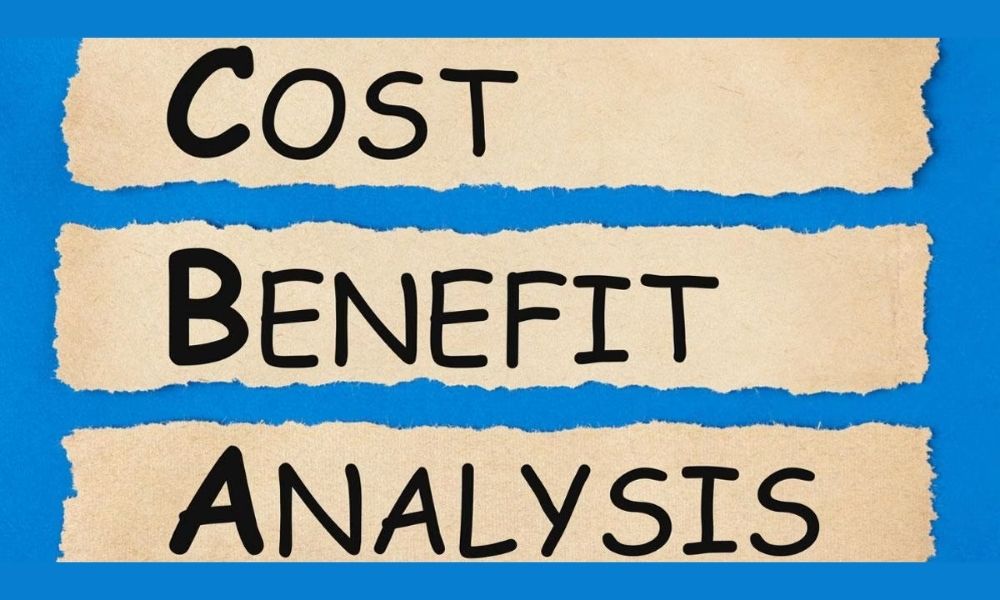Cost benefit analysis (CBA) is a systematic process used to evaluate the potential costs and benefits of a project or decision. It is a widely used tool in economics, business, and public policy to determine the most efficient and effective course of action. CBA involves identifying and quantifying all the costs and benefits associated with a project or decision, and then comparing them to determine whether the benefits outweigh the costs. In this article, we will explore the concept of cost benefit analysis in detail, including its definition, purpose, process, and examples.
Contents
Definition of Cost Benefit Analysis
Cost benefit analysis is a decision-making tool that compares the total costs of a project or decision to its total benefits. It is a quantitative technique that helps decision-makers evaluate the economic feasibility of a project or policy by identifying and measuring all the relevant costs and benefits. The goal of CBA is to determine whether the benefits of a project or decision outweigh its costs, and if so, by how much.
The concept of cost benefit analysis can be traced back to the 19th century, when French engineer Jules Dupuit first introduced the idea of measuring the economic benefits of public projects. However, it was not until the mid-20th century that CBA gained widespread recognition and became a standard tool for evaluating public policies and projects.
Read:What are spousal benefits social security?Purpose of Cost Benefit Analysis
The primary purpose of cost benefit analysis is to help decision-makers make informed choices by providing a systematic and objective evaluation of the costs and benefits associated with a project or decision. It allows decision-makers to compare different options and choose the one that provides the greatest net benefit to society.
CBA is particularly useful in situations where resources are limited, and trade-offs need to be made between competing projects or policies. It helps decision-makers identify the most efficient and effective use of resources by considering all the costs and benefits associated with each option.
Moreover, CBA also helps decision-makers consider the long-term consequences of a project or decision, rather than just the short-term impacts. This is especially important in public policy, where decisions can have significant and long-lasting effects on society.
The Process of Cost Benefit Analysis
The process of cost benefit analysis involves several steps, which are outlined below:
Step 1: Identify the Project or Decision
The first step in CBA is to clearly define the project or decision that is being evaluated. This includes identifying the objectives, scope, and timeframe of the project or decision.
Read:do spouses of 100 disabled veterans get benefits after deathStep 2: Identify the Costs and Benefits
The next step is to identify all the costs and benefits associated with the project or decision. This includes both monetary and non-monetary costs and benefits. Monetary costs and benefits are those that can be measured in terms of money, such as the cost of materials, labor, and equipment, and the revenue generated by the project. Non-monetary costs and benefits are those that cannot be easily quantified, such as environmental impacts, social benefits, and intangible factors like quality of life.
Step 3: Assign a Monetary Value to Costs and Benefits
Once all the costs and benefits have been identified, the next step is to assign a monetary value to each of them. This can be done by using market prices, expert opinions, or other valuation techniques. It is important to note that assigning a monetary value to non-monetary costs and benefits can be challenging and may require some assumptions and estimations.
Step 4: Calculate the Net Present Value
The net present value (NPV) is the difference between the total benefits and total costs of a project or decision, adjusted for the time value of money. This step involves discounting all future costs and benefits to their present value using an appropriate discount rate. The discount rate takes into account the opportunity cost of investing money in the project and reflects the risk associated with the project.
Read:Are fringe benefits taxable?Step 5: Conduct Sensitivity Analysis
Sensitivity analysis is a technique used to test the robustness of the results of a cost benefit analysis. It involves varying the assumptions and inputs used in the analysis to see how sensitive the results are to changes in these variables. This helps decision-makers understand the potential risks and uncertainties associated with the project or decision.
Step 6: Make a Decision
The final step in CBA is to make a decision based on the results of the analysis. If the NPV is positive, it means that the benefits of the project or decision outweigh the costs, and it is considered economically feasible. However, if the NPV is negative, it means that the costs outweigh the benefits, and the project or decision should be rejected.
Examples of Cost Benefit Analysis
Cost benefit analysis is used in a wide range of industries and sectors, including government, business, and non-profit organizations. Some common examples of CBA include:
Infrastructure Projects
CBA is often used to evaluate large infrastructure projects, such as highways, bridges, and airports. For example, before building a new highway, a cost benefit analysis would be conducted to determine whether the benefits of the project, such as reduced travel time and increased economic activity, outweigh the costs, such as construction and maintenance costs.
Environmental Policies
CBA is also commonly used to evaluate environmental policies and regulations. For instance, a cost benefit analysis would be conducted to determine the economic impact of implementing a new pollution control measure, such as a carbon tax or emissions trading scheme.
Healthcare Interventions
CBA is used in the healthcare sector to evaluate the costs and benefits of different medical treatments and interventions. For example, a cost benefit analysis would be conducted to determine whether a new drug or medical procedure is cost-effective compared to existing treatments.
Advantages and Limitations of Cost Benefit Analysis
Advantages
- Provides a systematic and objective evaluation of costs and benefits
- Allows for comparison of different options
- Considers both monetary and non-monetary costs and benefits
- Helps decision-makers consider the long-term consequences of a project or decision
- Can be used to evaluate projects and policies in different industries and sectors
Limitations
- Assigning a monetary value to non-monetary costs and benefits can be challenging
- Relies on assumptions and estimations, which may be subjective
- Does not take into account distributional impacts
- Results can be sensitive to changes in assumptions and inputs
- Does not consider non-economic factors, such as ethical or social considerations
Conclusion:
Cost benefit analysis is a powerful tool for decision-making that helps evaluate the economic feasibility of a project or decision. It allows decision-makers to compare different options and choose the one that provides the greatest net benefit to society. However, it is important to recognize that CBA has its limitations and should be used in conjunction with other decision-making tools and techniques. By understanding the process and purpose of cost benefit analysis, decision-makers can make more informed and effective choices that benefit society as a whole.









